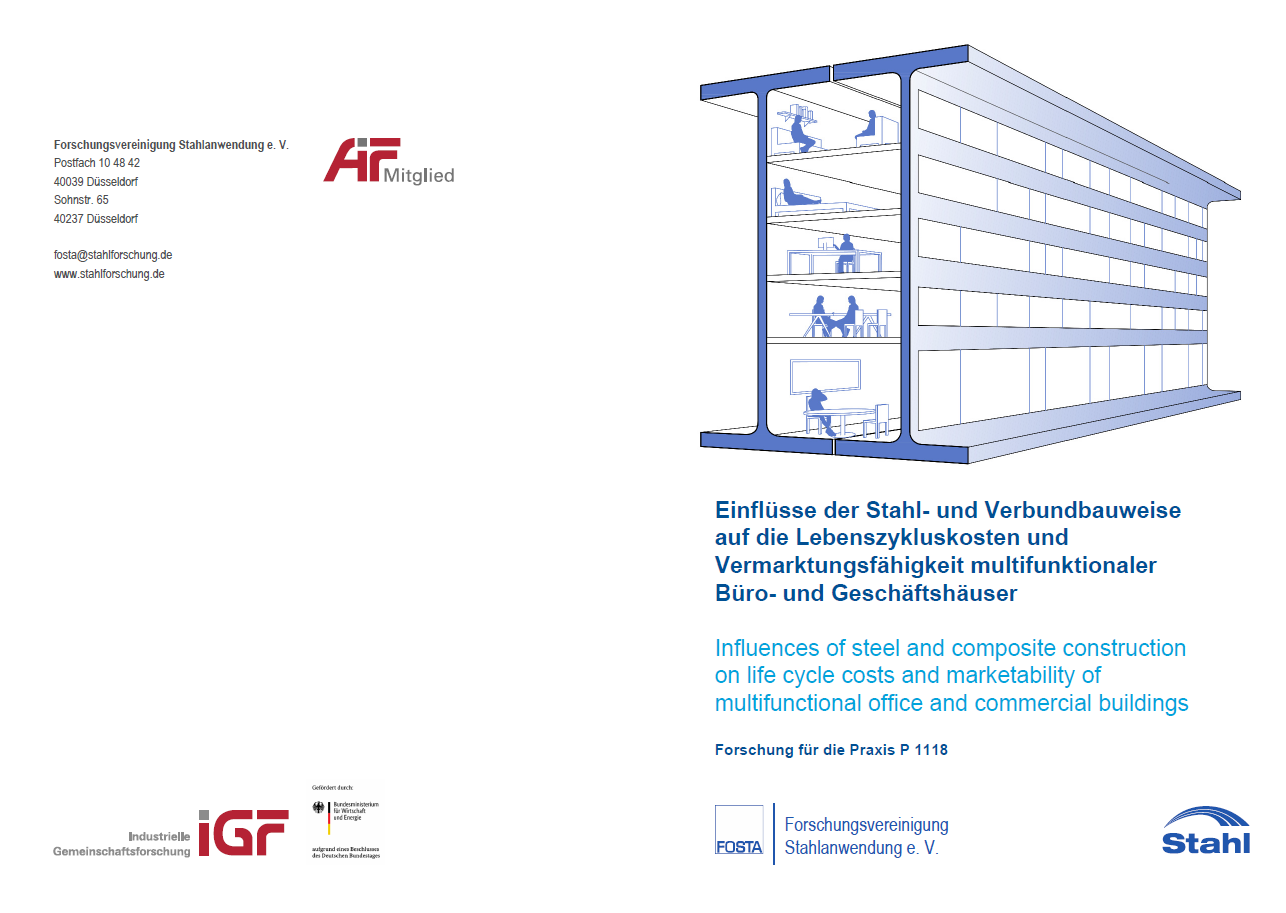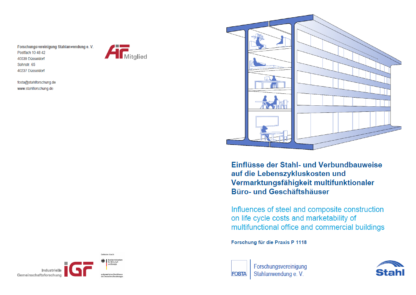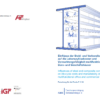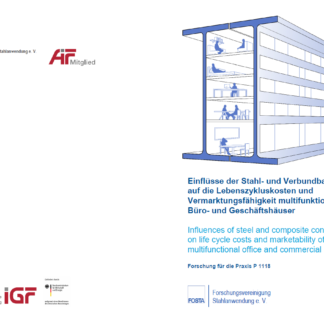Description
P 1118 – Influences of steel and composite construction on life cycle costs and marketability of multifunctional office and commercial buildings
The demographic change and the increasing awareness of sustainability are examples of changing social conditions, which affect the user requirements of multi-storey buildings. Resource conservation, recyclability, lifecycle costs and conservation of value, even under changing property conditions, are increasingly in the focus of planning. Among other things, the competitiveness of rented and usable space depends on whether the spaceforming structures offer the necessary flexibility to adapt to these dynamic processes. Experiences of the past decades show that the establishment of cost-effective monofunctional building structures and neighbourhoods, as they have been built in many cities since the 1970s, often result in an early vacancy up to a demolition, as a consequence of an insufficient adaptability of the primary structure.
Because of these circumstances, the aim of the research project was the development of multifunctional building structures by using advantages of steel and composite constructions. In this manner, the long-term marketability and sustainability of the real estates should be increased. Subject of the research report is initially an analysis of the current situation of the real estate market and the causes of structural vacancy. Afterwards, already implemented revitalization projects will be presented and the gained insights for object planning will be summarized. Chapter 2 explaining the basics of sustainability assessment of buildings and building elements as well as the evaluation methods used in the project. Based on the findings of previous revitalization projects, in Chapter 3 planning recommendations for multifunctional buildings are formulated. The requirements of different types of use, such as the clear storey height, the building depth or accessibility, are summarised. Overlaying these aspects results in the requirements of variable building structures. These are illustrated by designs of reference buildings with different degrees of variability. Based on the object planning requirements, Chapter 4 deriving the constructive implications resulting from a multifunctional use. The characteristics of classic and multifunctional floor systems in composite construction as well as the influences of fire protection, facades and foundations are examined. Parameter studies assess the ecological, monetary and functional influences of the various building components. The effects of increased variability and lifetime extension are examined using the reference buildings as examples.
Chapter 5 includes an analysis of the market segments relevant for the research project and their development. Furthermore, the use-specific revenues and the monetary appraisable risks are determined. The investigations are the basis of the stochastic scenario analyses, which allow conclusions about the variation of the predicted costs, revenues and fixed target values. In Chapter 6 the examples of reference buildings are used to determine the return expectations based on the return on equity for different conversion scenarios. Finally, with the use of sensitivity analyses the effects of the individual input parameters are observed. The investigations carried out show that suitable planning measures could increase the variability of building structures and offer the possibility of manifold use. Efficient load bearing structures in steel and composite allows the adaptability of the buildings without significantly increasing the ecological or monetary costs for the construction. If an extension of the life cycle is created by the increased variability, there are clear advantages. The economic feasibility studies show that a higher initial investment in many scenarios leads to a long-term increase in the return of invest and a reduction of the vacancy risk.
Main content only available in german language.
Published in:
March 2020
Authors:
Prof. Dr.-Ing. Richard Stroetmann, Dipl.-Ing. Lukas Hüttig, Prof. Dipl.-Ing. Johann Eisele, Dipl.-Ing. Architekt Benjamin Trautmann, Prof. Dr.-Ing. Dipl.-Wirt.-Ing. Jens Otto, Dipl.-Ing. Anne Harzdorf, Dipl.-Ing. Cornell Weller




